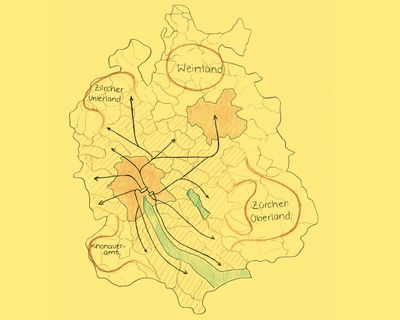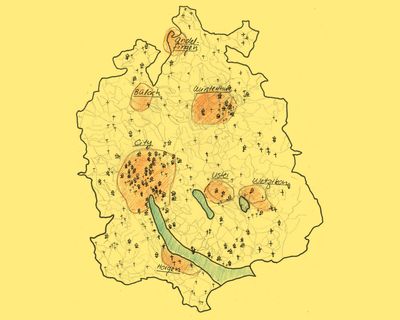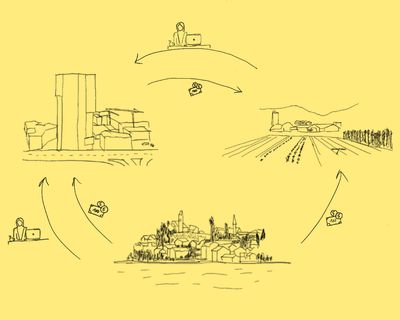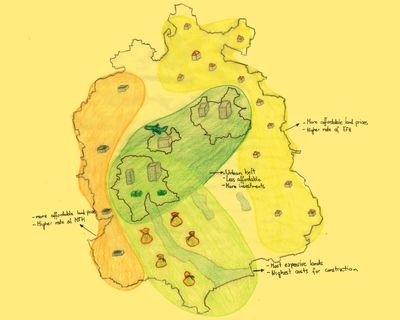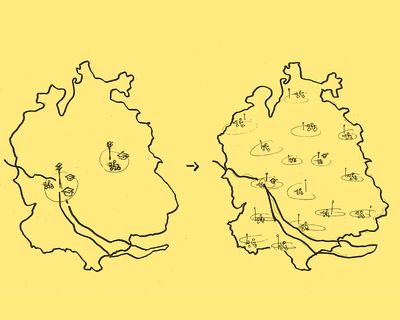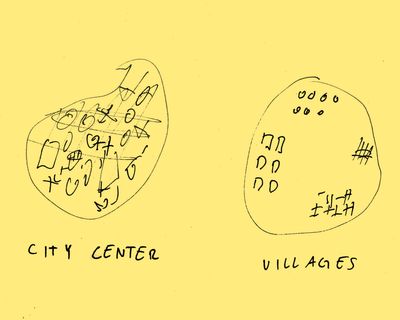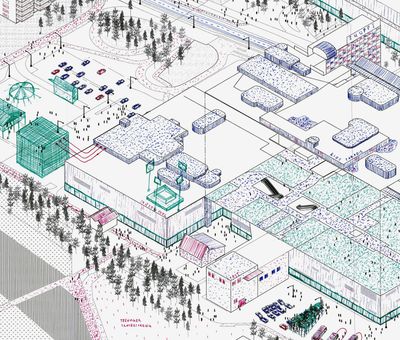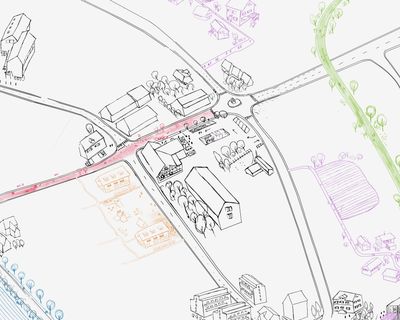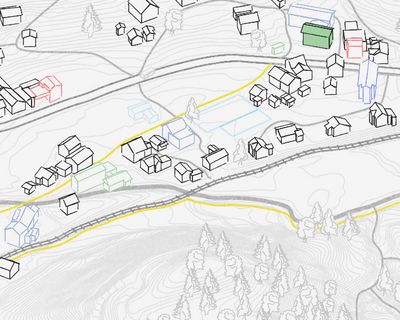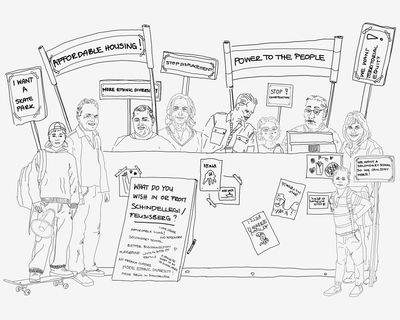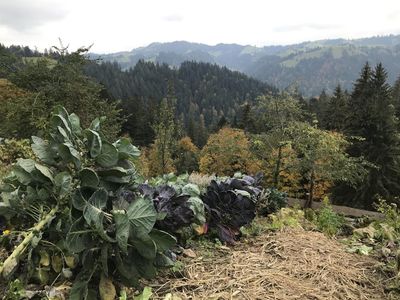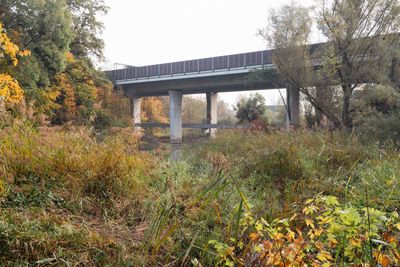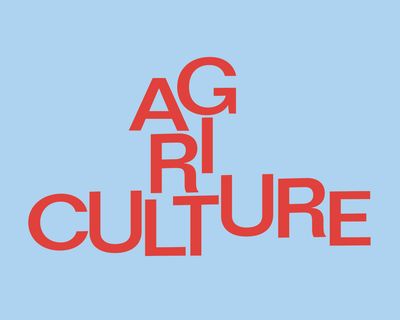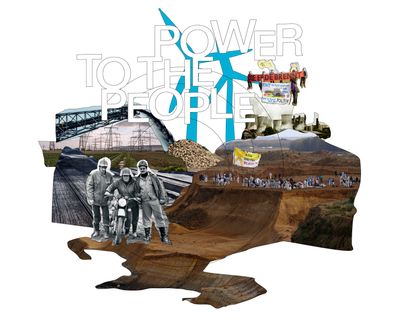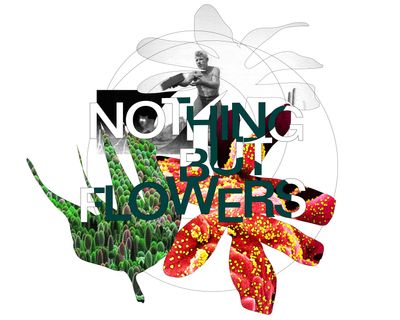Village Life
Beyond the Urban-Rural Divide
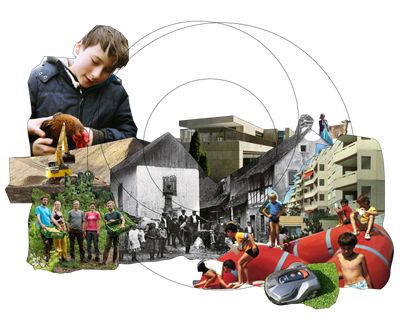
Villages have lost most of their historic features. Peasant populations and traditional farming no longer exist. In Switzerland the share of people working in agriculture has plunged from around 60 % in 1800 to 2.5 % today, and to only 1.1 % in the Canton of Zurich. Non-agrarian economies and ways of life have spread across former rural areas. It appears that the urban-rural dichotomy has collapsed and that villages are becoming more and more urban.
Yet village life continues to provoke imagination, and to promise an alternative path, an antidote to life in cities. To their residents villages seem to offer more space, more freedom, and perhaps a connection to the land, nature, and the fellow neighbour. The Covid pandemic has reignited the appeal of life on the land, leading to surge in real-estate prices around large cities in Europe and the world. But the longing for the countryside has taken hold of urbanites many times before, ever since ancient Romans yearned for mythical Arcadia and built their estates in the Campagna Romana. In the 1960s and the 1970s, the Landsehnsucht lead the middle classes and the wealthy elites to colonise areas of rural idyll around Zurich, manifesting in experimental housing projects such as the Siedlung Seldwyla (Guyer et al., 1975-78) in Zumikon.
The appeal of villages holds other promises too. They are social-democratic and ecological: The commune, consisting of a village and its surrounding land, has been the basic cell of Swiss and European territory, and it has offered a social model anchoring crucial values: autonomy, direct democracy, decentralisation of decisions, political dialogue among citizens, social control of the state and economy, sustainable material culture, care and reciprocity with the soil and non-humans, and more. All these values are again indispensable in the face of ecological crisis.
Thus, villages may not disappear after all. On the contrary, their importance will likely increase. Though countless villages had been changed, even destroyed, through industrialisation, excessive urban growth, economic and cultural peripheralisation, and a lack of attention by experts including architects, life in villages still holds potential. (In the arena of populist politics such potentials are exploited. The Stadt-Land-Graben is a persisting cliché in which “left-green cities” take advantage of the productive “countryside”). An effort to explore different, more inclusive and more optimistic narratives is urgent.
In the Canton of Zurich there are 162 communes, most of which have less than 10,000 inhabitants and are thus considered “villages.” This statistical approach obscures the amazing diversity, vitality and the specificity of small settlements around Zurich. From the slow food valley around Bachs, to the architectural marvels of Zumikon, and the “Dorf der Milliardäre” in Schindellegi, the key questions guiding our explorations will be: What does young urban generation think of a life outside “the city?” What are the conditions that attract or repel (young) people to village life? Can the perceived disadvantages of villages (lacking cultural activities, a conservative environment, and long distances) be countered through new ideas and projects? Can we recover ideas of social solidarity and of commoning resources and labour? Can we envision different patterns of movement and exchange between places, beyond commuting between “centres and peripheries?” Can a village be seen as a neighbourhood in a larger territorial constellation that extends beyond “the city?”
During the semester you will write your own project brief and develop a research and a design project for a specific village in the Canton of Zurich. The work takes form of a web-based investigative reportage. In the villages you will work through interviews, sketches, video and field notes. Back in the studio you will work with the help of experts in GIS, web design, architectural writing and videography. Your reportages and visions will be presented online and in the public forum meant to inform design practises and public discourse.
NEW ECOLOGIES
New Ecologies is a studio series at the Architecture of Territory dedicated to ecologising architecture. Ecological thinking (which foregrounds the interactions between organisms and by extension between objects or social-technical systems and their environments) is applied in applied in relation to design practises and their social and environmental effects. The studio series is affiliated with the Future Cities Laboratory (FCL) and the new Master of Advanced Studies in Urban and Territorial Design (MAS UTD).
PROCESS AND RESULTS
The semester consists of investigative journeys and studio sessions. Architecture of Territory values intellectual curiosity, commitment, and team spirit. We are looking for eager explorers and team workers, motivated to make strong and independent contributions. Our approach enables you to work with a range of methods and sources pertaining to territory, including ethnographic fieldwork, interviews, literature research and writing, large-scale drawing techniques, videography, and online publishing. Experts and guests will help you sharpen your skills and craft common agendas through debates. You will work in groups of two or three.
FIELD WORK
Investigative journeys constitute the core of the research and design project. We will spend several days out in the field, starting already on the first day of the studio. Throughout the semester, common expeditions and individual fieldwork investigations form an essential component of your work.
LECTURE SERIES
The lecture series SESSIONS ON TERRITORY—Urbanism and the Countryside is highly recommended as an addition to the studio. Focusing on agriculture, the series will draw upon relationships of care and reciprocity with soil and biodiversity from the past and present, to help move beyond consumerist techno-fixes, and toward more self-sufficient and ecological land practices.
CREDITS
The semester offers a total of 17 credit points: Design Studio and Integrated Discipline Planning (14+3 CP).
